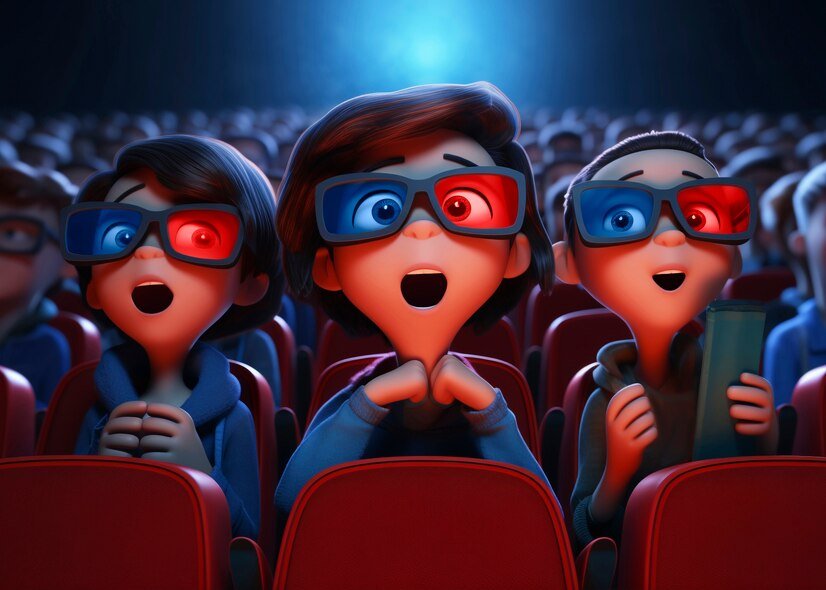Pixar has long been a pioneer in storytelling, creating movies that connect deeply with audiences. While dialogue is often central to narrative films, Pixar has mastered the unique art of telling stories with little or no spoken words. This technique highlights the studio’s ability to communicate universal emotions, creating timeless and impactful experiences for viewers. Let’s dive into how Pixar crafts these masterpieces.
Why Pixar Opts for Minimal Dialogue
Pixar occasionally chooses a no-dialogue or low-dialogue approach to focus on the universal language of emotion and visuals. This technique allows stories to transcend language barriers and cultural differences, reaching a global audience with greater impact.
The Power of Visual Storytelling
Pixar’s no-dialogue films are a testament to the saying, “Show, don’t tell.” Instead of relying on words, the studio emphasizes expressions, movements, and dynamic visuals to convey complex emotions.
The Silent Appeal of “Luxo Jr.”
One of Pixar’s earliest shorts, Luxo Jr., relies solely on animation to tell a compelling story about a playful lamp. Its charm lies in how it brings inanimate objects to life without a single line of dialogue, showing the potential of animation as a storytelling medium.
“Wall-E”: A Sci-Fi Story Without Words
Wall-E is perhaps the most famous example of Pixar’s minimal-dialogue storytelling. For much of the movie, Wall-E and Eve communicate through gestures, beeps, and body language, yet their connection feels deeply human. This approach enhances the emotional depth, making viewers focus on the characters’ feelings rather than their words.
How “Partly Cloudy” Speaks Through Actions
The animated short Partly Cloudy delivers a heartwarming tale of friendship between a stork and a cloud. The lack of dialogue allows the humor and emotion to shine through facial expressions and creative animation, making it a favorite among audiences of all ages.
“La Luna”: A Dreamy Visual Masterpiece
La Luna presents a magical story about a boy, his father, and his grandfather working on the moon. With no spoken dialogue, the film creates an intimate atmosphere, encouraging viewers to interpret its themes of family and individuality through stunning visuals and music.
The Role of Music in Pixar’s Silent Films
Music plays a crucial role in no-dialogue Pixar films. Scores composed by maestros like Michael Giacchino and Thomas Newman add depth, emotion, and rhythm, effectively guiding viewers through the story.
Connecting Across Cultures
Films without dialogue are universally understood, making them ideal for global audiences. Pixar’s no-dialogue shorts, like For the Birds and Bao, resonate with people from diverse backgrounds because the emotions they portray are universally relatable.
Challenges of No-Dialogue Storytelling
Creating a film without dialogue isn’t easy. Pixar animators and storytellers must find innovative ways to communicate plot and emotion. The reliance on animation, sound effects, and music demands meticulous attention to detail.
Why No Dialogue Feels Timeless
Stories without words often feel timeless. By focusing on universal themes like love, friendship, and curiosity, Pixar’s films remain relevant for generations, free from the constraints of contemporary language or slang.
Lessons from Nature: Observational Storytelling
Pixar often takes inspiration from nature for their no-dialogue stories. The subtle movements of animals, plants, and natural elements provide a foundation for their silent characters’ behavior, making them feel authentic and relatable.
Audience Engagement Without Words
Without words to explain the story, viewers must actively interpret what’s happening on screen. This interactive aspect of no-dialogue films keeps the audience engaged and invested.
“The Blue Umbrella”: Love in Silence
The Blue Umbrella is a Pixar short that tells a love story between two umbrellas. Its simplicity and the lack of dialogue let viewers fully immerse themselves in the emotional journey of its characters.
The Influence of Silent Films on Pixar
Pixar’s approach to silent storytelling draws inspiration from classic silent films, where visual performance and exaggerated expressions carried the story. This influence is evident in the studio’s attention to detail and emotional depth.
Creating Depth Through Simplicity
Less can often mean more. By eliminating dialogue, Pixar focuses on the essence of storytelling—characters and emotions. This simplicity creates a profound impact, leaving a lasting impression on viewers.
A Future for Silent Pixar Films

As technology advances, the possibilities for silent storytelling continue to grow. Pixar’s commitment to innovation ensures that its no-dialogue films will remain groundbreaking and relevant.
Conclusion
Pixar’s ability to tell captivating stories without dialogue showcases the power of animation as a universal language. Through brilliant visuals, emotive music, and innovative storytelling, Pixar proves that words aren’t always necessary to connect with audiences. These films remind us that sometimes, silence speaks louder than words.
FAQs
Why does Pixar use minimal dialogue in some films?
Pixar uses minimal dialogue to emphasize visual storytelling, making its films more universally relatable.
What are some examples of Pixar’s no-dialogue films?
Notable examples include Luxo Jr., Wall-E, Partly Cloudy, and La Luna.
How does music enhance Pixar’s no-dialogue films?
Music helps convey emotion and mood, acting as an emotional guide for the audience.
Are no-dialogue films more challenging to create?
Yes, they require meticulous attention to animation, sound effects, and music to effectively communicate the story.
Why do no-dialogue films feel timeless?
By focusing on universal themes and visuals, these films transcend cultural and linguistic boundaries, appealing to all generations.











